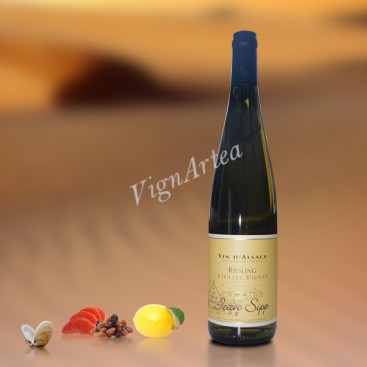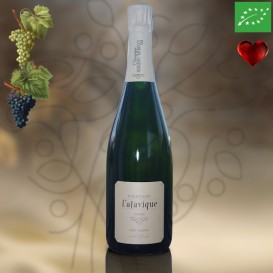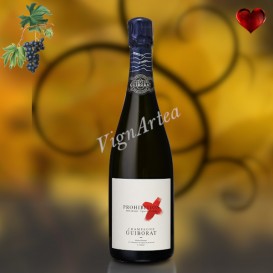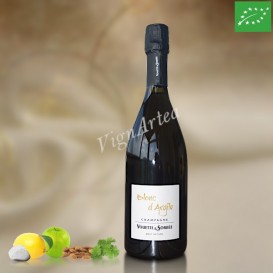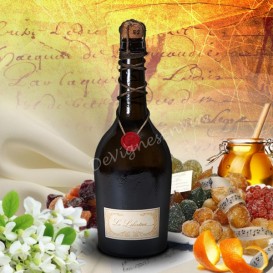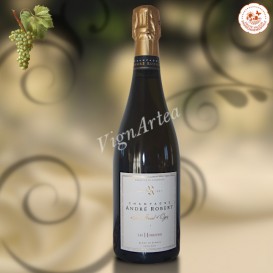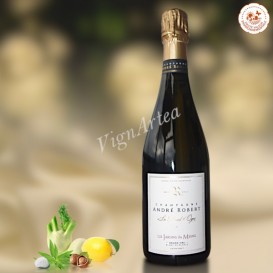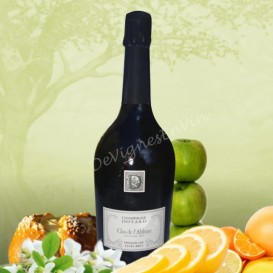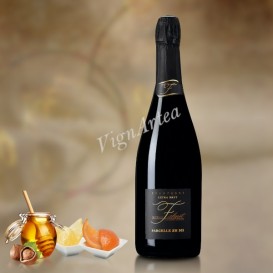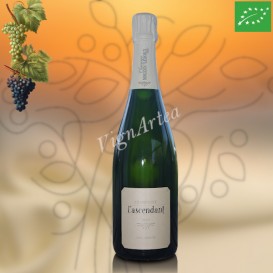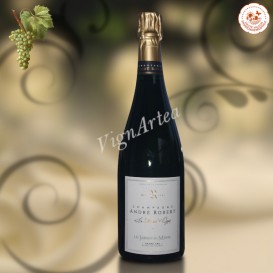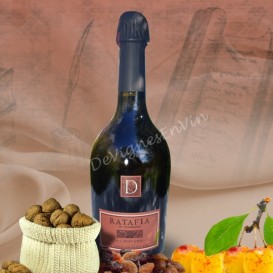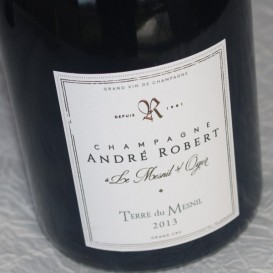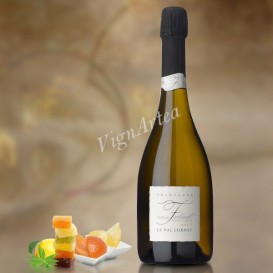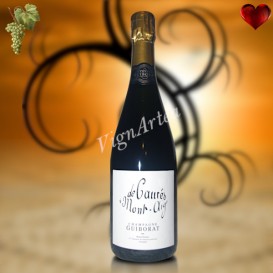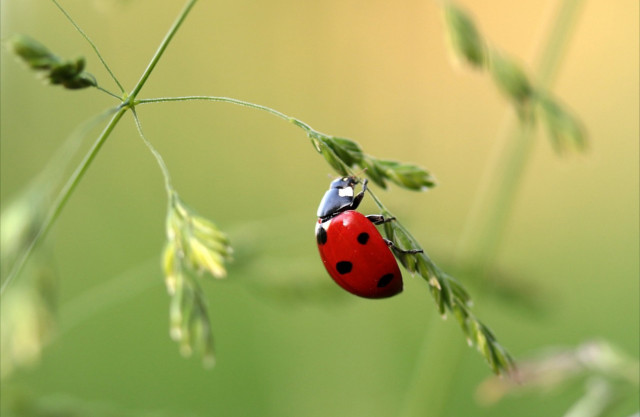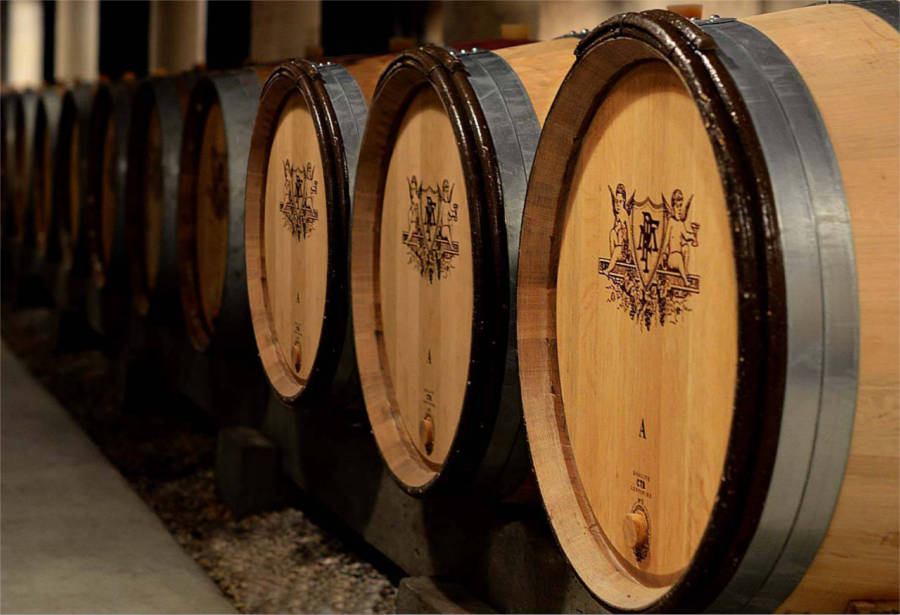RIESLING VIEILLES VIGNES 2016 (Domaine Jean Sipp)
ALSACE - AOP ALSACE - DRY WHITE WINE
Grape variety: Riesling (100%)
Lees ageing in tunes for 10 months
- Nose: powerful and mineral. Aromas of lemon, pink grapefruit and currant.
- Palate: frank attack. tonic and nicely perfumed juice.
Tasting date: October 2020
OUR OPINION: very nice Riesling, ample and generous.
DESCRIPTION
The vines that give rise to the RIESLING VIEILLES VIGNES cuvée are over thirty years old and are located on the plots of the Hagenau and Grossberg localities. Both bring together a terroir's mosaic that retrace the Earth history over more than 20 million years.
TERROIR
The terroir of the Grossberg locality is the oldest, it covers the Triassic period from -245 to -233 million years, and is made up of three geological layers which each outcrop in different places of the plots :
- the Buntsandstein (-245 to -238 million years ago), composed of Voltzia (a fossil plant close to cypress) Sandstone which presents very fine quartz grains and an abundance of white mica. Its sedimentation was of deltaic type and occured under the influence of fresh water and sea water at the same time,
- the lower and middle Muschelkalk (-238 to -233 million years ago), composed of fossiliferous sandstone and sandstone marls with gypsum, whose sedimentation took place in a marine to brackish environment, the sea then having invaded the region where it will remain for over 100 million years.
The terroir of the lieu-dit Hagenau complements the Grossberg's one with subsequent geological formations whose sedimentation took place in a marine environment. The bathymetric variations and the more or less strong oxygenation of the sea have led to an alternation of marly and limestone layers which each outcrop on different plots. We can distinguish :
- the upper Muschelkalk (-233 to -230 million years ago), composed of a bank of encrinal limestone, witness of a shallow, agitated and oxygenated sea which favored the carbonates precipitation and their sedimentation on the seabed,
- the lower Keuper (-230 to -227 million years ago), composed of gray-black marls with gypsum and dolomites (carbonate sedimentary rock containing dolomite), testifying to a much deeper and poorly oxygenated sea.
WINEGROWING & WINEMAKING
The vines are cultivated in accordance with the Organic viticulture specifications. The Jean Sipp estate has also started its conversion in 2018 in order to obtain the official organic certification.
The harvest is manual. The grapes are pressed slowly for 8 hours by pneumatic pressing.
The juice is then left in the vat for a settling of 24 hours, before being racked into casks where it will carry out its alcoholic and malolactic fermentation under temperature control for 6 weeks.
It will be racked again in tuns for a 10 months ageing phase on the fine lees.
Bottling takes place in July.
- Acidity: 7,6 g/l
- Residual sugar: 3,5 g/l
| Country | Alsace |
| Color | White |
| Orange wines | No |
| Clay amphorae wines | No |
| Type | Dry |
| Vintage | 2016 |
| Capacity | 75 cl |
| Single Grape Variety | Riesling |
| Alcohol rate | 13,5 % |
| Quality Designation | Alsace |
| Cellar Potential | 10 years |
| Service advise | 12°C (54°F). Open 1/2 hr before the service. |
| Culture Methods | Sustainable cultivation method |
| Filtering | Yes |
| Comments | Yield: 60 hl. Manual Harvests. Slow grapes pressing, fermentation of six weeks, then fine lees ageing in large oak casks for 10 months. |

